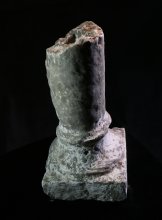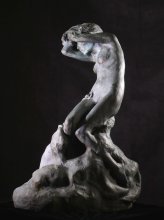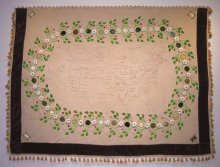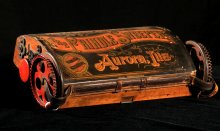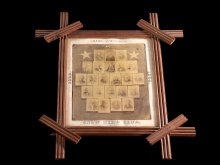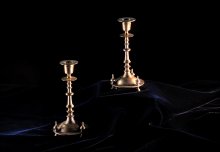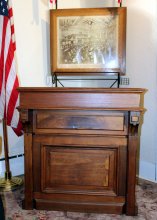Industrializing Illinois (1877-1917)
Following the Civil War, Illinois continued to grow in population, diversity, and complexity. Large-scale heavy manufacturing and a growing commercial sector joined agriculture as major employers of a rapidly growing population. Immigration continued, with African Americans from the South and southern and eastern Europeans joining more established groups. Conflicting interests sometimes led to unrest, strikes, and even violence. During this period, Illinois also became a center of exciting new movements in art, architecture, and literature.
In 1890, lead architect Daniel Burnham took on the impossible task of designing a model city in Jackson Park in Chicago for the 1893 Chicago World’s Fair (also known as the Columbian Exposition, which commemorated the 400th anniversary of the arrival of Columbus in the New World). The trouble was, architects and builders had just over two years to complete the monumental task. This baluster, recovered in archaeological excavations, is from a roof balustrade on the Ohio Building. The White City, as the collection of Fair buildings was known, was built to last as long as the fair (about six months).
In 1914, artist and sculptor Alfonso Iannelli came to Chicago from Los Angeles to work on Frank Lloyd Wright’s Midway Gardens. Iannelli created the famous Sprite figures, the angular, column-like figures that graced Midway’s three-acre beer garden. Iannelli and his artist wife, Margaret, moved to Chicago in 1915 and eventually settled in Park Ridge in 1920, where they maintained a studio workshop.
Richard Lawson was serving a sentence for marijuana possession in 1969 when he was assigned to serve as an inmate photographer at the Joliet Stateville Prison. During this time, he discovered a cache of glass plate negatives produced by inmates at about the turn of the century. Years later, when he became a professor at Southern Illinois University, he conserved and put together an exhibition of the images in 1981. So far, more than 100 images have been preserved and printed.
Around 1890, two enterprising teenaged girls from Owaneco, Ida Ramseyer and Laura Fry, came up with an ambitious plan: they would write to the wife of each state’s governor to request swatches of fabric from their ball gowns, then use those swatches to create a crazy quilt.
In the winter of 1910-1911, a drifter named Charles Bosquet stopped at Julian Sprimont’s farmhouse in Will County and requested room and board for the winter. A deal was struck whereby Bosquet promised to create this large cabinet for Sprimont’s battery-operated radio in exchange for his stay. The two men went from tavern to tavern that winter collecting the wooden cigar boxes that Bosquet needed for his work.
This noiseless carpet sweeper was manufactured by the Prindle Manufactuing Company of Aurora, Illinois, in the 1880s. When pushed along the floor, the brushes would rotate, sweeping dirt and dust from the floor into the dust pan. Devices like these saved homeowners from the laborious process of taking carpets and rugs outside to beat them.
Those who survived the "winter of the deep snow” called themselves snow birds and considered themselves the true original settlers of Illinois. In 1882, a group of male snow birds formed a Snow Bird Club for the purpose of calling on old settler ladies every New Year’s Day. A copy of this photo, depicting the 23 members of the Club, was given to each lady they visited in 1884.
Cornelia Young of Hillsboro purchased these candlesticks from peasants in Sorochinskoye, Russia, after World War I. They were cherished possessions, yet the peasants were desperate to raise money in order to buy warm clothing and food.
Clothing worn by Native American men and women was often colorfully decorated, as is the case of this beaded vest made between 1880 and 1900. Beads were first strung together before attaching them to the surface, allowing the maker more freedom in creating curved designs. The floral patterns probably indicate a strong, French colonial influence. The Ojibwa, or Chippewa people, lived in the northern United States and Canada around Lake Superior.
John C. McKenzie (1860-1941) began his career as a lawyer in the small village of Elizabeth in northwestern Illinois. He served in the Illinois House from 1892 to 1896 and in the Illinois Senate from 1900 until 1911. He used this desk until the State ordered new ones for both chambers.
Pages






